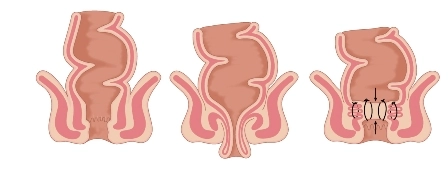7 Examples Demonstrate How You Should Code Zika Virus Situations
Here’s what to do for at risk but asymptomatic patients. Questions continue to abound when it comes to Zika virus coding, and if you confront these seven examples surrounding both confirmed and suspected cases, you’ll become an expert. A subscriber asks, “What dx codes should I use when a patient is pregnant and her Zika testing was negative, but at 33 weeks we do an ultrasound to check the fetal growth due to the fact that she did travel to a Zika area while pregnant?” The ICD-10 guideline is as follows: Code only confirmed cases: Code only a confirmed diagnosis of Zika virus (A92.5, Zika virus disease) as documented by the provider. This is an exception to the hospital inpatient guideline Section II, H. In this context, “confirmation” does not require documentation of the type of test performed; the physician’s diagnostic statement that the condition is confirmed is sufficient. This code should be assigned regardless of the stated mode of transmission, says Jan Rasmussen, PCS, CPC, ACS-GI, ACS-OB, owner/consultant of Professional Coding Solutions in Holcombe, Wis. Suspected Zika: If the provider documents “suspected,” “possible,” or “probable” Zika, do not assign code A92.5. Instead, assign a code(s) explaining the reason for encounter (such as fever, rash, or joint pain) or Z20.828 (Contact with and [suspected] exposure to other viral communicable diseases). Check Out Current Recommendations for Confirmed Zika Patients The AHA Coding Clinic (2016, Vol.3 No. 4), however, published coding advice for pregnancy, but remember that you would only code in this manner if there was an intervention with the management of the mother. Based on current recommendations, a pregnant woman with confirmed Zika virus infection may be screened more frequently during the pregnancy to monitor fetal development and possible fetal abnormalities. Example 1: A woman 16 weeks of gestation, who has been diagnosed with Zika virus infection, presents to the obstetrician for antenatal ultrasonic screening to check for fetal abnormalities. The ultrasound demonstrated abnormal findings and the patient was referred to a specialist for further tests. Assign code O28.3 (Abnormal ultrasonic findings on antenatal screening of mother) as the first-listed diagnosis. Assign also codes O98.512 (Other viral diseases complicating pregnancy, second trimester), A92.5, and Z3A.16 (16 weeks gestation of pregnancy). As appropriate, assign codes for any other specific findings identified. Example 2: A woman 20 weeks of gestation diagnosed with Zika virus disease infection presents to the obstetrician for antenatal ultrasonic screening to check for fetal abnormalities, which shows no abnormal findings. Assign code Z03.73 (Encounter for suspected fetal anomaly ruled out) as the first-listed diagnosis. Also, assign codes O98.512, A92.5, and Z3A.20 (20 weeks gestation of pregnancy). Example 3: A woman with a known Zika virus infection presents for prenatal care at 32 weeks of gestation. A previous ultrasound did not demonstrate any fetal abnormalities. Code O98.513 (Other viral diseases complicating pregnancy, third trimester) should be assigned as the first-listed diagnosis. Assign also codes A92.5 to identify the infection and Z3A.32 (32 weeks gestation of pregnancy). Example 4: A patient, who has a known Zika virus infection with previously diagnosed fetal anomalies, presents for prenatal care at 22 weeks of gestation. Assign code O35.3XX0 (Maternal care for [suspected] damage to fetus from viral disease in mother, not applicable or unspecified) as the first-listed diagnosis. Assign also codes O98.512, A92.5, and Z3A.22 (22 weeks gestation of pregnancy). Delve Into At Risk but Asymptomatic Zika Patients There may be several reasons a pregnant woman who has no symptoms of the Zika virus but is considered to be at risk may be sent for testing for the Zika virus. Example 5: A pregnant woman returning from areas where active mosquito-borne transmission of Zika virus is occurring or residents who live in areas (for example, Puerto Rico, American Samoa) where active mosquito-borne transmission is occurring presents for a prenatal visit. Assign the appropriate code from category Z34.- (Encounter for supervision of normal pregnancy) as the first-listed diagnosis. An additional code Z20.828 (Contact with and (suspected) exposure to other viral communicable diseases) would be assigned for the suspected exposure. Example 6: A pregnant woman whose sexual partner has symptoms of or has been confirmed to have Zika virus infection presents to the obstetrician for a prenatal visit. Assign the appropriate code from category Z34.-- as the first-listed diagnosis. An additional code Z20.828 would be assigned for the suspected exposure. Example 7: A patient, who is pregnant, is being seen by the obstetrician for results of Zika testing. The results are negative, and the Zika virus infection has been ruled out. Assign code Z03.79 (Encounter for other suspected maternal and fetal conditions ruled out).




